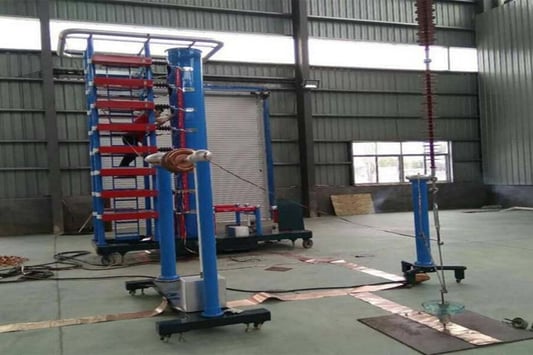impulse testing of power transformer is a crucial process that ensures the reliability and safety of these essential electrical components. By subjecting transformers to high voltage impulses, engineers can evaluate their performance under extreme conditions and identify any potential weaknesses. This article will delve into the various aspects of impulse testing and why it is essential for the proper functioning of power transformers.What is Impulse Testing?Impulse testing involves applying high voltage impulses to the power transformer to simulate lightning strikes or other sudden voltage surges. This test helps determine if the transformer can withstand transient overvoltages without suffering insulation failure or other damage. It is a standard procedure in transformer manufacturing and maintenance to ensure the transformer's reliability in real-world scenarios.Types of Impulse TestsThere are two main types of impulse tests commonly performed on power transformers: lightning impulse test and switching impulse test. The lightning impulse test evaluates the transformer's ability to withstand lightning strikes, while the switching impulse test assesses its response to abrupt changes in voltage during normal operation.Importance of Impulse TestingImpulse testing is crucial for verifying the insulation strength of power transformers. By subjecting the transformer to high voltage impulses, engineers can identify any weak points in the insulation system that could lead to breakdown under transient overvoltages. This helps prevent unexpected failures and ensures the transformer's longevity.Testing ProceduresDuring an impulse test, the transformer is connected to a special test circuit that generates high voltage impulses with defined waveforms and magnitudes. The test voltage is gradually increased until the desired impulse level is reached, and the transformer's response is carefully monitored for any signs of breakdown or failure.Interpreting Test ResultsAfter completing the impulse test, engineers analyze the test results to determine the transformer's impulse strength and insulation performance. Any abnormalities or deviations from the expected behavior are carefully examined to pinpoint potential weaknesses in the transformer design or construction.Benefits of Impulse TestingImpulse testing provides valuable insights into the transformer's ability to withstand transient overvoltages, which are common in power distribution systems. By identifying and rectifying any insulation weaknesses, engineers can enhance the transformer's reliability and reduce the risk of costly downtime or equipment damage.Industry Standards and RegulationsImpulse testing of power transformers is governed by industry standards such as IEC, ANSI, and IEEE, which define the testing procedures, equipment requirements, and acceptance criteria. Compliance with these standards is essential to ensure the reliability and safety of power transformers in various applications.Challenges in Impulse TestingConducting impulse tests on power transformers can pose certain challenges, such as ensuring the safety of testing personnel, handling high voltage equipment, and interpreting complex test results. Proper training, experience, and adherence to safety protocols are essential to overcome these challenges effectively.Future Trends in Impulse TestingAdvancements in technology are driving innovations in impulse testing methods, such as the use of digital simulation tools, sensor-based monitoring systems, and automated testing procedures. These developments aim to enhance the accuracy, efficiency, and reliability of impulse testing for power transformers in the future.ConclusionImpulse testing of power transformers is a critical process that evaluates the insulation strength and performance of transformers under transient overvoltages. By conducting thorough impulse tests and analyzing the results, engineers can ensure the reliability, safety, and longevity of power transformers in various applications.Quote Inquirycontact us










